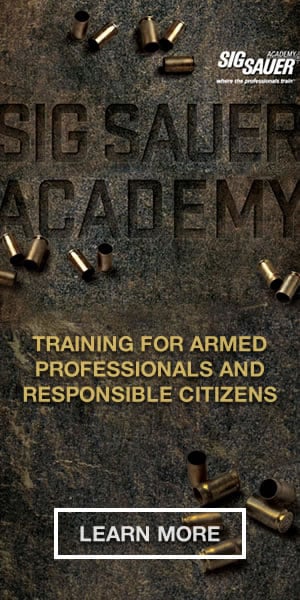Last month, I completed shotgun training with my police academy cadets. Out of all the things I teach in law enforcement academy firearms training, handling the shotgun is still my favorite.
I learned to shoot shotguns at age 14. A neighbor down the street took my dad, brother and me to his gun club where we learned to shoot clay birds thrown from a manually operated thrower. As I recall, I shot a 20 gauge pump on that first time out and loved it. It would be awhile until I worked with shotguns again.
When I became a deputy sheriff at age 23, I learned to use the 12 gauge pump shotgun as a defensive tool. Then, as now, the Remington 870 Pump reigned supreme in the Midwest as a police standard weapon. I learned to handle it with 00 Buckshot and rifled slugs, and to appreciate its power and effectiveness at close range with buckshot and at extended ranges with rifled slugs.
Even though the pump shotgun has been eclipsed by the AR15/M16 for law enforcement and civilian defensive use, it still has its place when properly understood and deployed.
Why select a defensive pump action shotgun over a semi-automatic shotgun? While modern semi-automatic defensive shotguns tend to be quite reliable, their operation is a bit more complex than the pump gun, and some autos can be finicky with light target loads. A pump shotgun is manually operated and will cycle properly with any modern quality load. Depending on the gun, that means anything from 2 3/4" target loads and buckshot to 3 or 3 1/2" magnum loads. For defensive use, I recommend a smoothbore (non-rifled) pump shotgun with an 18 inch barrel and Cylinder Bore or Improved Cylinder Bore choke. Modified and full choke barrels don't take well to slug rounds. A smoothbore allow interchangeable use of shot or slug. While shot rounds can be fired from rifled shotgun barrels, they don't pattern as well as they do from a smoothbore. A four shot magazine should be sufficient in most cases and keeps the shotgun better balanced than extended magazine guns. Stick with 2 3/4" shells-leave the magnums for hunting.
Where and when are pump shotguns appropriate for self-defense? First, a shotgun should not be the primary gun of choice for defending oneself in an apartment-especially in apartments where there are neighbors on three sides and above and below you. For most in-home self-defense, a handgun is the best choice. But for those who live in rural areas, where outdoor property or outbuildings need to be defended from irate man or beast, and especially where the use of high power rifles is impractical, a shotgun is an indispensable piece of equipment. Also, if I had an RV or houseboat, I would definitely keep a shotgun aboard either platform.
The shotgun is not an area fire weapon. It has to be aimed to be effective. 00 Buckshot pellets tend to spread at a rate of only one inch per yard after leaving the muzzle. It's not the "street sweeper" depicted in movies and television, and it is quite possible to miss a human target at relatively close ranges. I have seen plenty of missed shots at a qualification distance of 21 feet by new recruits and experienced officers who had not mastered aiming the shotgun. It shouldn't happen, but it does.
Sighting equipment for a defensive shotgun ranges from extremely simple to complex. For shotguns that are going to be primarily used with some form of shot rather than slugs, a simple brass bead sight has worked very well for many years. For those with larger properties who may occasionally find the need for an extended range shot, or who also wish to use their shotgun for pastimes such as deer hunting, rifle sights will be a better option. While some shotguns can mount electronic optics, I believe those are best left for competitive sports.
As to gauge (bore size) and defensive loads for the pump, 12 gauge is pretty much standard. However, a 20 gauge defense shotgun will do quite nicely, and is actually a better choice for folks that are recoil sensitive. A .410 pump with modern specialty loads such as Hornady’s .410 Triple Defense is a good choice. It produces devastating close range damage even when fired from a 2 1/2" barrelled Bond Arms Derringer.
For interior home use, target loads like Winchester AA Trap and Skeet are ideal. Light target loads deliver impressive close range damage, pattern nicely, and will not carry as far, or penetrate as deep as 00 Buckshot.
For exterior defense, buckshot is in order. Remington's 8 pellet managed recoil 12 gauge load is the tightest patterning buckshot load I have ever used, bar none. It still stays within silhouette targets at 30 yards, with recoil indistinguishable from target loads.
The shotgun, like the revolver is still alive and well. It packs a powerful punch with an intimidation factor that may prevent you from actually having to fire a shot.
Defending ones castle requires a layered defense strategy. Consider including a pump shotgun as one of those layers. You won't be sorry.


